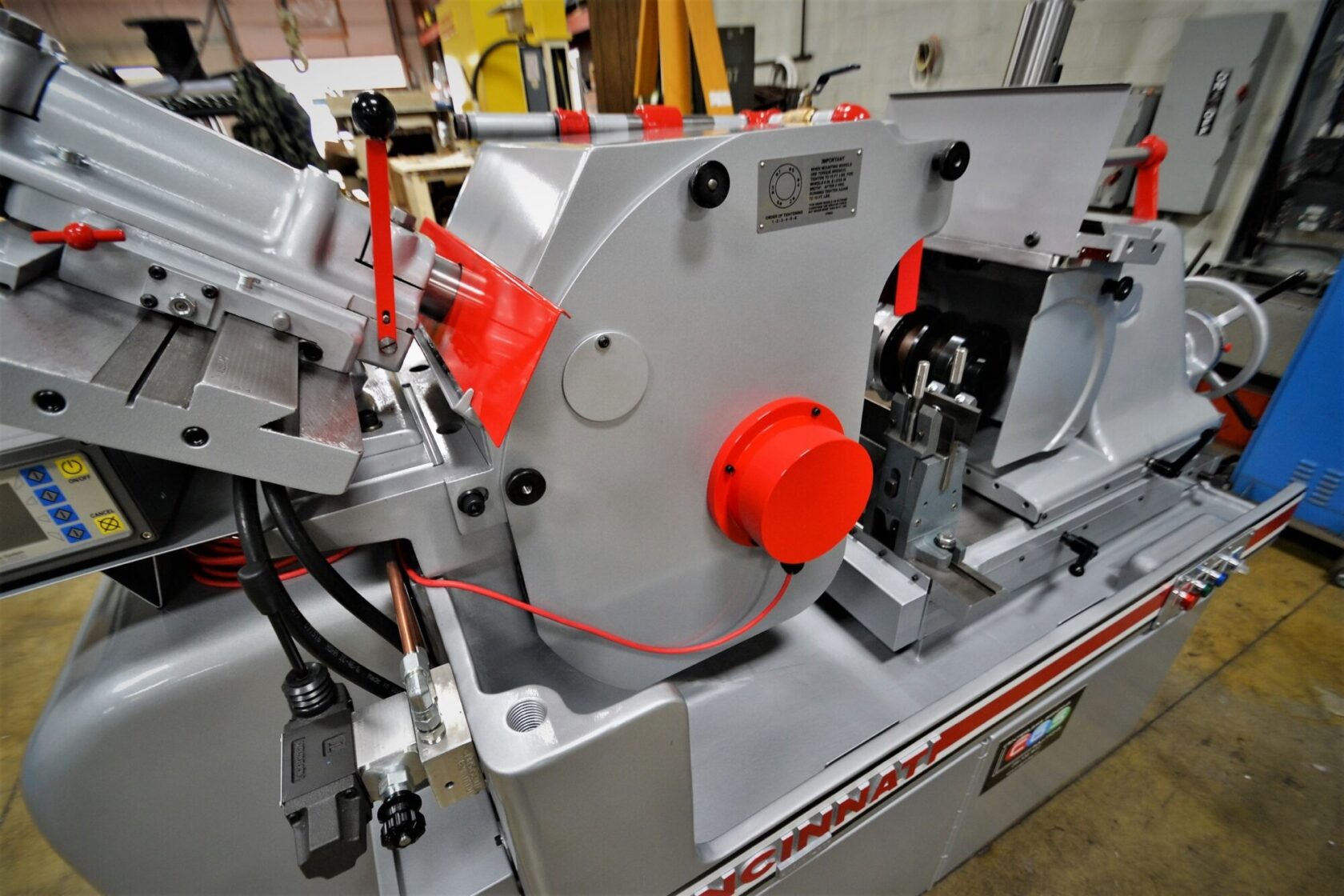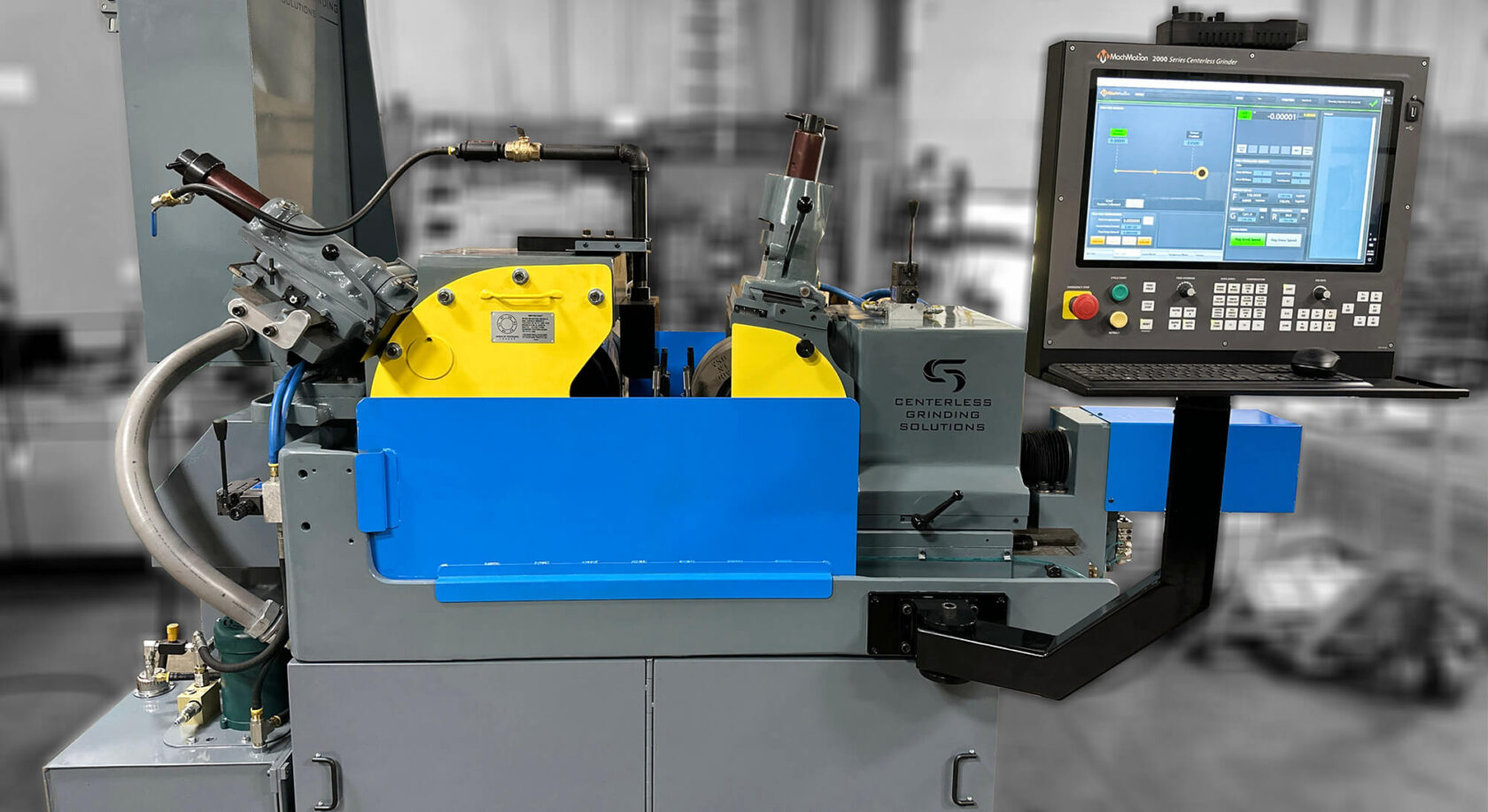
5 Best Ways to Improve Centerless Grinder Uptime
Maximizing the uptime of a centerless grinder is crucial for any manufacturing operation focused on efficiency and profitability. When your grinder is idle, it’s not just taking a break; it’s missing out on valuable production time that could significantly contribute to your bottom line. However, improving uptime extends beyond simple operational adjustments. It demands a thorough analysis of where time is lost, an understanding of potential solutions, and the commitment to implement these changes effectively.
Each machining environment presents its own challenges, making a one-size-fits-all solution impractical. Instead, this blog aims to provide a broad spectrum of strategies to enhance grinder uptime, allowing you to select and tailor approaches that best fit your circumstances.
Identifying Major Uptime Losses
Understanding where time is lost is the first step in improving the uptime of your centerless grinder. Many shops utilize Overall Equipment Effectiveness (OEE) as a metric to gauge equipment utilization, pinpointing areas where improvements are most needed. Typically, the most significant losses stem from:
- Setup Time: Adjusting the machine for different parts can significantly reduce production time.
- Operating Below Optimal Speed: Running the grinder at speeds below its maximum capacity reduces the part output rate.
- Machine Breakdowns: Unexpected equipment failures halt production and necessitate time-consuming repairs.
- Production of Substandard Parts: This is often an overlooked loss. Although the machine constantly operates, producing parts that fail to meet quality standards is wasteful.
Addressing these areas can substantially improve your centerless grinder’s uptime, directly impacting productivity and profitability.
5 Strategies to Improve Centerless Grinder Uptime
Improving the uptime of centerless grinders involves a multifaceted approach. Here are five key strategies to consider:
1. Embrace Automation
Manual loading cannot match the potential speed of a centerless grinder. Implementing automation for part loading and unloading can significantly enhance uptime.
Automation options include post process gauging to produce a tighter tolerance and consistent part quality, robotic systems for maximum flexibility, bowl feeders for smaller parts, and vibratory systems to orient parts for processing. For the unloading side, gentle handling methods like conveyors or robotic arms can prevent damage to finished surfaces while maintaining efficiency.
2. Minimize Setup Time
Reducing the time it takes to switch from one part to another is crucial for maintaining high part rates. Organizing work by part families minimizes the need for frequent adjustments. Technological upgrades, such as servomotors for precise wheel and blade positioning and advanced machine controllers, can streamline setup processes, making them quicker and more accurate.
3. Implement Preventative Maintenance
Regular maintenance is key to avoiding unexpected breakdowns. This includes routine inspections, replacing consumables like oil and filters, and addressing wear and tear on components. For grinders that have seen extensive use, a comprehensive rebuild may be necessary to restore peak performance. Establishing a consistent preventative maintenance schedule can prolong machine life and minimize downtime.
4. Maintain the Coolant System
The coolant system plays a vital role in grinding, carrying away debris, and preventing overheating. Daily maintenance ensures the coolant is clean and delivered effectively. For operations grinding exotic materials, high-quality coolant filtration is critical for meeting stringent surface finish and sizing requirements. Outside of exotic materials, paper filtration is utilized with non-ferrous materials such as aluminum, copper, lead, and nickel. Magnetic filtration is used for ferrous metals that contain iron or have magnetic properties, like stainless steel and cast iron.
5. Invest in Training
Centerless grinding is a complex and dangerous process that requires a deep understanding of the machinery and the grinding operation. A structured training program, especially conducted by experts familiar with the specific machines, can significantly improve operators’ efficiency, leading to better setups, higher-quality output, and reduced need for corrective actions like wheel dressing.
Implementing these strategies can lead to marked improvements in the uptime of centerless grinding operations, directly enhancing productivity and operational efficiency.
Benefits of Improved Uptime
Adopting the strategies outlined above can profoundly impact the performance and capacity of your centerless grinders. Here are some of the key benefits you can expect from improving grinder uptime:
- Increased Business Capacity: With automation and reduced setup times, your grinders can operate more continuously, even during breaks or off-hours, allowing you to take on more work and grow your business.
- Enhanced Quality: Consistent and efficient grinding processes lead to higher quality parts, reducing waste and increasing customer satisfaction. This quality improvement can also contribute to a higher Overall Equipment Effectiveness (OEE) score.
- Reliability and Delivery: Minimizing unplanned stoppages ensures that production schedules are more predictable, enhancing your ability to meet delivery commitments and manage costs associated with overtime and expedited shipping.
By focusing on these improvements, your shop can increase its output and build a reputation for reliability and quality, two critical factors in today’s competitive manufacturing environment.
Related FAQs
Q: What causes the most downtime in centerless grinding operations?
A: Downtime can be attributed to several factors, including lengthy setup times, operating below the machine’s capacity, unexpected breakdowns, and producing parts that don’t meet quality standards.
Q: How can automation improve centerless grinder uptime?
A: Automation streamlines the loading and unloading process, allowing the grinder to operate closer to its full capacity. This reduces idle time and significantly enhances overall productivity.
Q: Is preventative maintenance that important?
A: Absolutely. Regular preventative maintenance helps avoid unexpected machine breakdowns, ensuring consistent operation and reducing the risk of production delays.
Q: Can upgrading my grinder make a difference in setup times?
A: Upgrading your grinder with advanced controls and servomotors can greatly reduce setup times by enabling faster, more precise adjustments.
Q: How does operator training impact centerless grinding efficiency?
A: Well-trained operators can set up machines more efficiently, produce higher-quality parts, and reduce the need for corrective actions like wheel dressing. Comprehensive training is key to maximizing the potential of your centerless grinding operations.
Q: Why is coolant maintenance crucial for centerless grinding?
A: Proper coolant maintenance is essential for removing grinding debris, preventing overheating, and ensuring a quality surface finish. Neglecting the coolant system can lead to poor grinding results and increased wear on the machine.
Conclusion
Improving the uptime of your centerless grinder is not just about keeping your machines running; it’s about optimizing your entire manufacturing process for peak efficiency and quality. The strategies discussed here, from embracing automation to investing in comprehensive training, are key to unlocking the full potential of your grinding operations.
Ready to take your centerless grinding operations to the next level? Centerless Grinding Solutions is here to help. Whether you’re interested in exploring automation options, rebuilding or upgrading your machines, or seeking expert training for your team, we have the expertise and solutions you need. Don’t let downtime dictate your production capabilities. Contact us today to discover how we can help you maximize your centerless grinder uptime and transform your manufacturing process.

